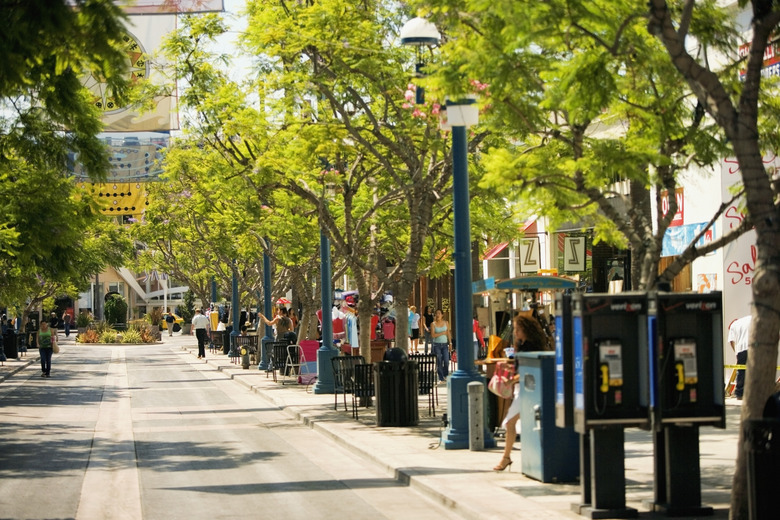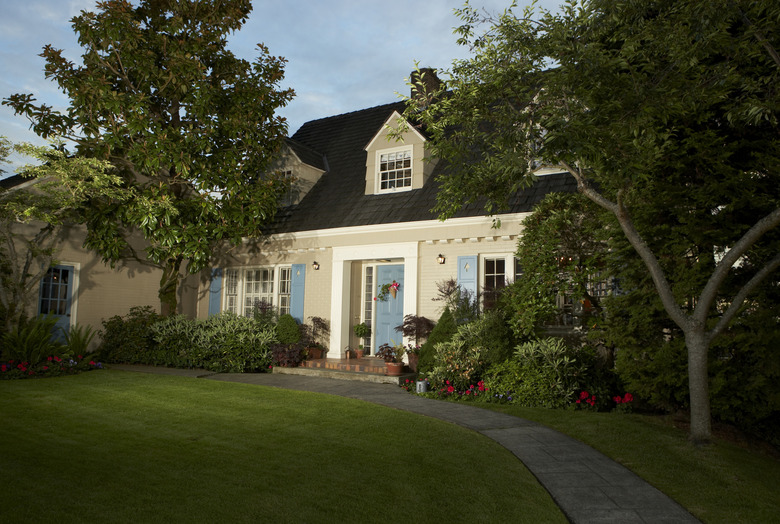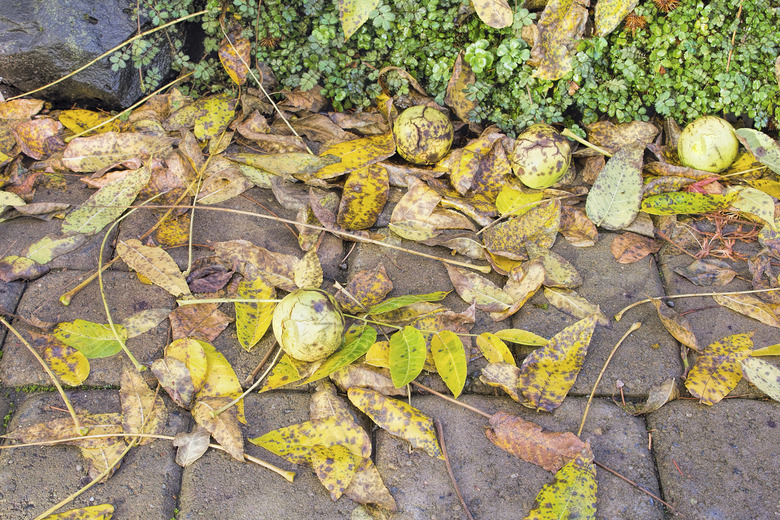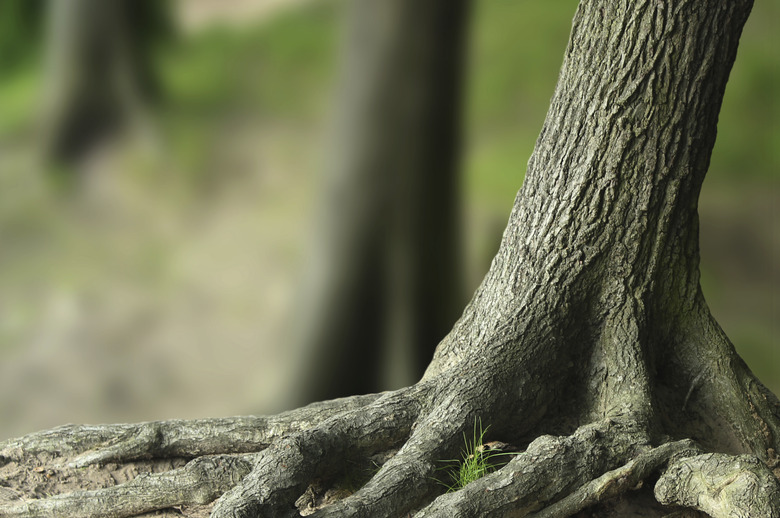Trees To Plant Near Concrete
Trees add desirable elements such as shade and focal points to a landscape. In urban and suburban settings, however, adding trees often places them near some form of concrete. Choosing trees carefully can help to avoid tree damage to concrete as well as to avoid damage the concrete can cause the trees.
Proximity to Structures
Where you plant your trees is an important consideration because tree roots can damage concrete walkways, walls, septic tanks and swimming pools. Even a tree with a non-aggressive root system can cause damage if it is too close to a concrete structure. Small trees should be a minimum of 10 feet from structures while large trees must be at least 30 feet from them. A good rule of thumb is to determine the eventual mature canopy width of a tree you want to plant and then place that tree where its mature canopy will not extend to a concrete structure.
Fallen Leaves and Other Debris
Some trees create a mess with their debris so are not suitable near concrete. Dropped tree fruit can stain concrete, and leaves or needles shed by trees can cover concrete. Messy trees are always a bad idea near swimming pools and should be kept far enough away so that their debris doesn't damage the pools or the decks around the pools.
Soil pH
Lime leaching from concrete raises the pH level, or the alkalinity level, in the soil near concrete. Most plants, including trees, grow best in soil with a pH level of about 6.5 to 7.0, and a higher pH level can interfere with their abilities to take in nutrients, though a level up to pH 7.5 should be acceptable for most trees. When you want to plant trees near concrete, select tree varieties that are likely to tolerate high pH levels to avoid them having stress and growth problems.
Tree Selection
Choose deep-rooted trees that will thrive in your U.S. Department of Agriculture plant hardiness zone. Avoid using trees that have shallow roots because they are more likely to damage concrete sidewalks, patios, pools and building foundations as they spread their roots in search of water and nutrients. Several kinds of trees are suitable to plant near concrete:
Hedge Maple
The hedge maple (Acer campestre) is a slow-growing tree that can eventually reach 35 feet tall with a 35-foot canopy width or spread. It is hardy in USDA zones 5 though 8a and is recommended for planting in areas along roads, in parking lots and near sidewalks. It produces fruit but is not considered a serious litter problem.
Arizona Cypress
The smooth-barked Arizona cypress (Cupressus glabra 'Carolina Safire') grows well near concrete. This tree is hardy in USDA zones 7 through 9. It is quite tall, reaching as much as 70 feet in height, but is cylindrical in shape with a canopy no more than 10 to 15 feet wide. It tolerates dry conditions and grows rapidly, as much as 6 feet per year.
Ginkgo
The ginkgo tree (Ginkgo biloba) can grow 100 feet tall with a 20- to 50-foot canopy spread, but its deep rooting system makes it suitable near concrete. It's best to plant only male ginkgos because the females produce fruits that can be very messy. Ginkgo is hardy in USDA zones 4 through 9.
Japanese Crape Myrtle
The Japanese crape myrtle (Lagerstroemia fauriei) produces an abundance of fragrant flowers during spring and summer. It grows slowly but can become 35 to 50 feet tall with a canopy 25 to 35 feet across. Because of its deep root system, this tree can be planted near concrete and is unlikely to damage it. Japanese crape myrtle is hardy in USDA zones 6b through 10a.



